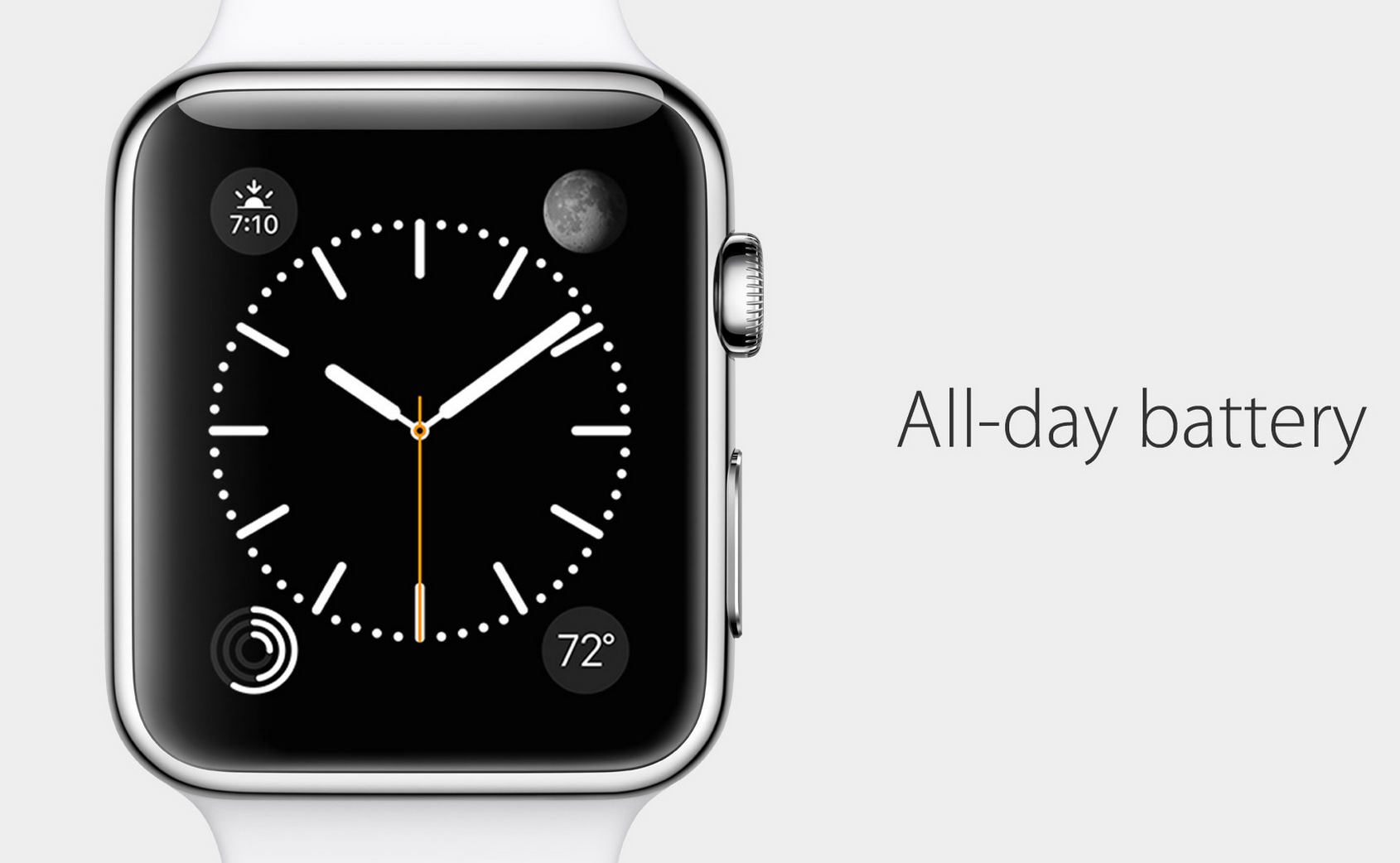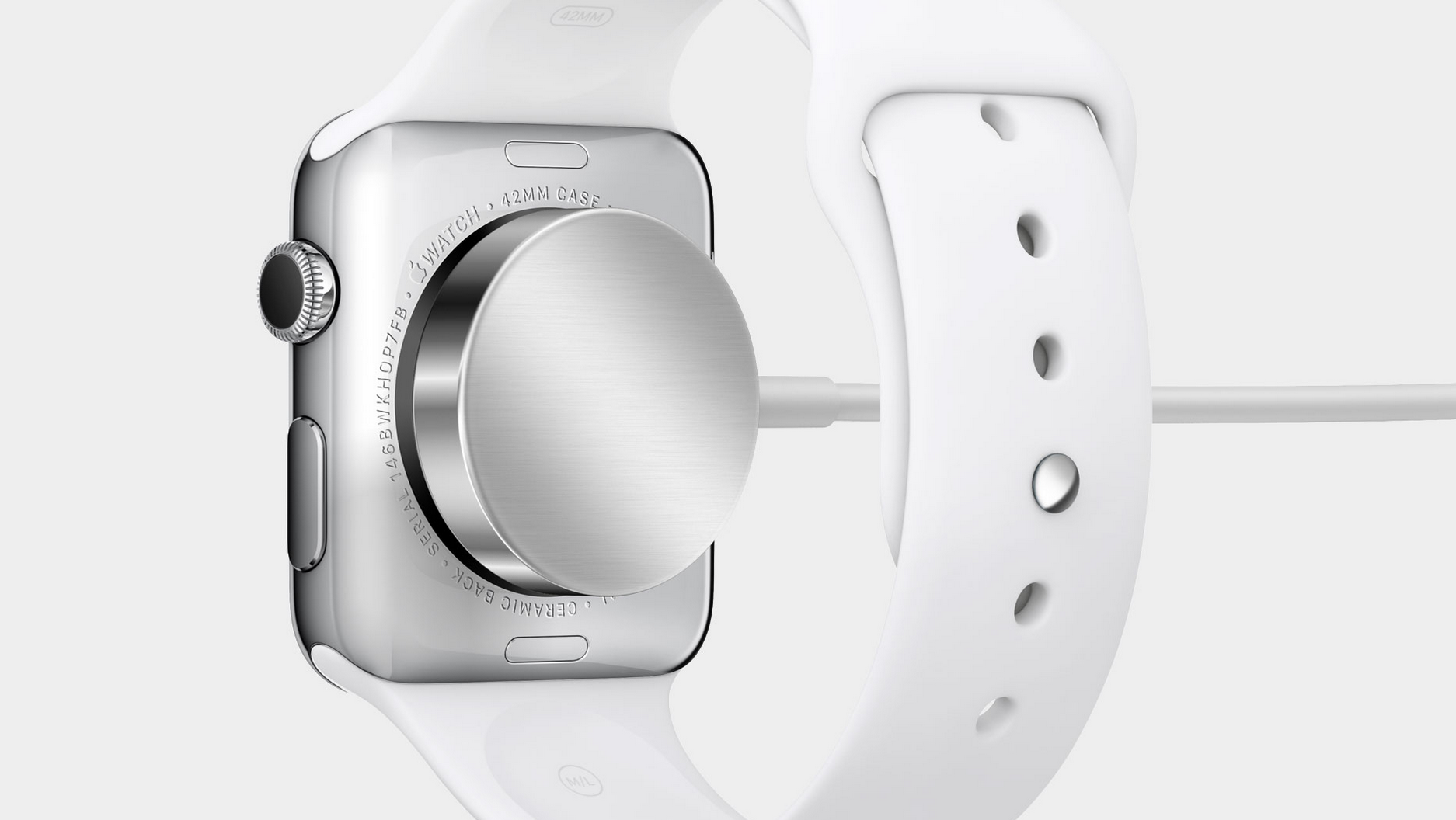Now that Apple has shared full details concerning its highly-anticipated Watch devices, which goes on sale in the United Stated and eight major international markets on April 24, starting at $349, the Cupertino company has posted additional details regarding its “all-day”18-hour battery.
Of course, the advertised battery life depends on how you use your Watch. If you’re just going to do things like checking the time, receiving notifications, using apps and doing a 30-minute workout, the battery should last up to eighteen hours before needing to be charged again overnight.
Here is what Apple had to say about the Watch’s battery performance.
Before we dive into it, it’s important to note that the battery claims above were derived from a pre-production 38mm Watch. Even more importantly, as Apple put it, “a 42mm Apple Watch typically experiences longer battery life.”
Find a summary of Watch usage scenarios and their expected impact on the device’s battery life included below:
18-hour battery
The “all-day battery life”, as Apple puts it, assumes you’ll be checking the time 90 times per day, checking out up to 90 notifications, spending 45 minutes in apps and doing a 30-minute workout with music playback from the Watch via Bluetooth.
In addition to the aforementioned combined activities that fall within the target 18-hour battery life, Apple has also broken down the device’s energy efficiency around single user activities, including the following:
Talk time: up to three hours
Because the Watch pairs with an iPhone in your pocket, it lets you receive phone calls and make outgoing calls from your wrist and Apple is claiming three hours of talk time.
Audio playback: up to 6.5 hours
Streaming music from an iPhone to your Watch via Bluetooth will get you up to 6.5 hour of audio playback.
Workout: up to 7 hours
If you’re a fitness nut like me, you’ll be using the Watch to measure your movement, activity and workouts. The Workout alone will deplete the battery after seven hours of non-stop use. Of course, no one spends seven hours running or working out so you’ll still have plenty of charge left if you spend about two hours in the gym.
Watch test: up to 48 hours
Apple boasted about the Watch’s ability to tell tie within 50 milliseconds of the Universal Time Standard. Assuming you’ll be using your Watch exclusively for timekeeping, Apple says you’ll be able to do five time checks per hour lasting four seconds each over the course of 48 hours before the battery dies.
Power Reserve mode: up to 72 hours
The Apple Watch has what’s called a Power Reserve mode which disables all functionality but timekeeping whenever your battery “gets too low,” allowing you to continue to see the time for up to 72 hours.
Charge time
Charging the Watch up to 80 percent capacity takes about 1.5 hours using the included MagSafe inductive charger, or 2.5 hours in total to charge the battery from zero to 100 percent. “Charge time varies with environmental factors; actual results will vary,” cautions the firm.
So there you go, this is what you can expect from the Apple Watch in terms of energy efficiency and battery performance.
As a rule of thumb, heavy use of the device will consume more juice so you may not be necessarily able to get through the day on a single charge.
For those wondering, the company conducted battery testing in March 2015, using preproduction 38mm Apple Watch units and software paired with an iPhone using preproduction software.
Again, a bigger 42mm device provides longer battery life.
So what do you think about the Watch’s battery performance?
Source: Apple

